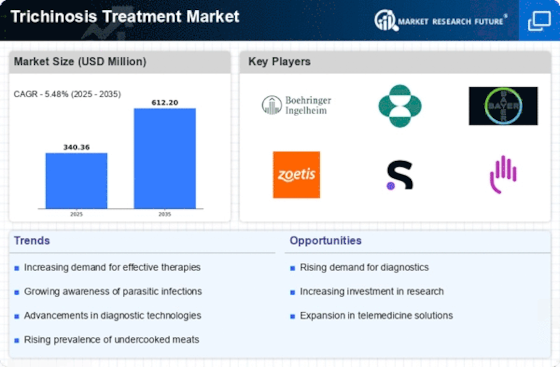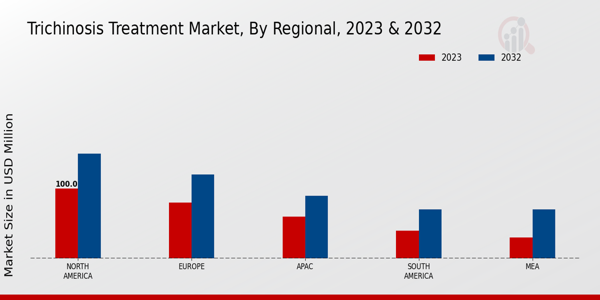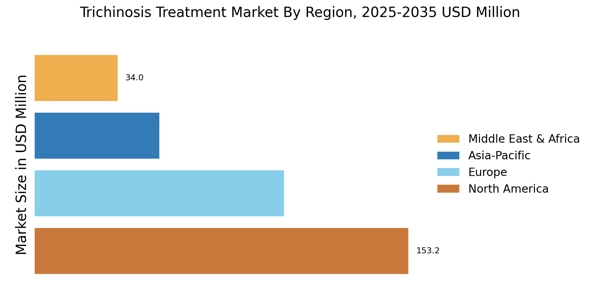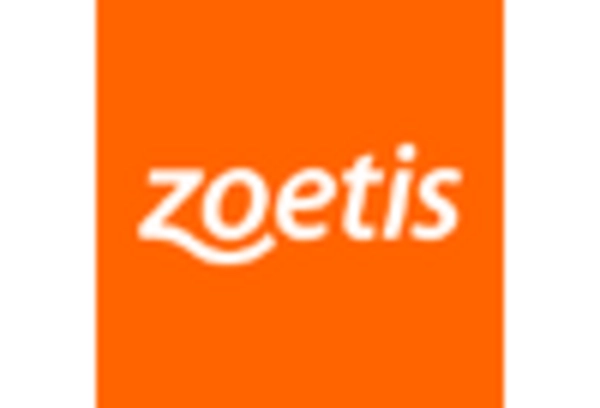Advancements in Diagnostic Techniques
Advancements in diagnostic techniques are significantly influencing the Trichinosis Treatment Market. Enhanced diagnostic methods, such as serological tests and molecular techniques, allow for quicker and more accurate identification of trichinosis infections. This improvement in diagnostics not only facilitates timely treatment but also helps in tracking and managing outbreaks more effectively. As healthcare systems adopt these advanced diagnostic tools, the likelihood of early intervention increases, which is crucial for reducing the severity of the disease. Moreover, the integration of these technologies into routine clinical practice may lead to a higher detection rate of trichinosis, further driving the demand for treatment options. The Trichinosis Treatment Market stands to benefit from these innovations, as they create a more informed patient population and a proactive healthcare approach.
Rising Consumer Awareness and Education
Rising consumer awareness and education regarding foodborne illnesses, including trichinosis, are driving the Trichinosis Treatment Market. As individuals become more informed about the risks associated with undercooked pork and the importance of food safety, there is a growing demand for effective treatment options. Educational campaigns and public health initiatives play a crucial role in disseminating information about prevention and treatment. This heightened awareness not only encourages individuals to seek medical attention promptly but also fosters a culture of prevention, which may ultimately reduce the incidence of trichinosis. Consequently, the Trichinosis Treatment Market is likely to experience increased demand for treatment solutions as consumers prioritize their health and well-being.
Increasing Incidence of Trichinosis Cases
The rising incidence of trichinosis cases is a pivotal driver for the Trichinosis Treatment Market. Reports indicate that the number of reported cases has been steadily increasing, particularly in regions where pork consumption is high. This trend necessitates the development and availability of effective treatment options. As awareness grows regarding the symptoms and transmission of trichinosis, healthcare providers are more likely to diagnose and treat the infection promptly. Consequently, this surge in cases is likely to stimulate demand for treatment solutions, thereby propelling the market forward. Furthermore, the economic burden associated with trichinosis, including healthcare costs and lost productivity, underscores the need for effective interventions. The Trichinosis Treatment Market must adapt to these changing dynamics to meet the needs of affected populations.
Growing Investment in Research and Development
Growing investment in research and development is a key driver for the Trichinosis Treatment Market. Pharmaceutical companies and research institutions are increasingly focusing on developing new therapeutic agents and improving existing treatment protocols. This trend is fueled by the recognition of trichinosis as a public health concern, prompting stakeholders to allocate resources towards innovative solutions. The potential for novel treatments, including antiparasitic drugs and immunotherapies, could revolutionize the management of trichinosis. Furthermore, collaborations between academia and industry are likely to enhance the pace of discovery and development. As a result, the Trichinosis Treatment Market may witness a surge in new product launches, catering to the evolving needs of healthcare providers and patients alike.
Regulatory Support for Treatment Accessibility
Regulatory support for treatment accessibility is an essential driver for the Trichinosis Treatment Market. Governments and health organizations are increasingly recognizing the need for effective treatment options for trichinosis, leading to the establishment of guidelines and policies that promote access to care. This regulatory framework aims to ensure that patients receive timely and appropriate treatment, thereby improving health outcomes. Additionally, initiatives to streamline the approval process for new therapies can facilitate quicker market entry for innovative treatments. As regulatory bodies continue to advocate for improved access to care, the Trichinosis Treatment Market is poised for growth, as more patients are likely to benefit from available treatment options.



















Leave a Comment